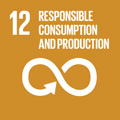- Docente: Luca Camanzi
- Credits: 4
- SSD: AGR/01
- Language: Italian
- Teaching Mode: Traditional lectures
- Campus: Cesena
- Corso: Second cycle degree programme (LM) in Food Science and Technology (cod. 8531)
-
from Feb 19, 2025 to May 23, 2025
Learning outcomes
At the end of the course the student knows the main categories of costs and benefits of the quality systems in the agri-food system and the main techniques for their economic evaluation. The student is able to use such techniques to evaluate the profitability of adoption of quality systems both in a private and public perspective.
Course contents
1. Economic Aspects of Quality
1.1 Notion of quality and attributes
1.2 Information asymmetry and competitive competitive market failure
1.3 Quality regulation
1.4 Public regulation of quality: information policies and standards
1.5 Private regulation of quality: certifications (organic, environmental, ethical, religious, large-scale retail trade standards, etc.) and the national quality system (SQN)
2. Quality policies: the regulation of the typical product and of the geographical indications
2.1 The typical product and the territory
2.2 The international protection of geographical indications (Paris Convention, Lisbon, WTO)
2.3 The European system for the protection of geographical denominations (PDO and PGI)
2.4 Traditional specialties guaranteed (TSG) and other quality signals
2.5 Economic effects of designations of origin
2.6 Protection in the wine sector
2.7 Traditional agri-food products (PAT)
2.8 valorisation of the typical product: identification-qualification-remuneration-maintenance-institutional support
3. The Development of Innovative Products
3.1 New Product Development in the Agri-Food System
3.2 Strategies for New Product Development
3.3 Consumer-Oriented New Product Development
3.4 The "Jobs to be Done" Approach
3.5 The Product Concept
4. Quality Design: The Business Plan
4.1 Entrepreneurial Idea, Mission, and Vision
4.2 Potential Market
4.3 Competitive and Industrial Landscape
4.4 Value Proposition for the Customer
4.5 Business Model
4.6 Marketing Activities
4.7 Activity and Personnel Plan
4.8 Financial Aspects
Readings/Bibliography
Menozzi, D. (2025).
Economia del sistema agroalimentare
2a edizione
EdiSES.
https://online.vitalsource.com/reader/books/9788836232130/epubcfi/6/6%5B%3Bvnd.vst.idref%3Dtitle%5D!/4/2
and other readings/online resources suggested by the teacher during the course.
Teaching methods
Face to face lectures
In-classe exercises and home assignments
Assessment methods
The assessment of learning is based on:
1) a "project work" (individual or group);
2) an oral examination.
1) The project work will consist in drafting a business plan for the market introduction of a new product, which will be developed and discussed with the instructor and the class during the course.
The business plan, structured according to the template provided on the Virtuale platform (file "BP template), can be developed either as a presentation (PowerPoint slides) or as a narrative document (Word/PDF file).
The final version of the project must be submitted by email to the instructor at least 3 working days before the exam date.
2) The final examination will consist of a 30-minute oral interview, including a discussion of the project work and two additional questions on topics covered in the course syllabus.
Eligible students may contact the teacher to possibly agree a date for examination other than the official ones.
Teaching tools
Power point presentations and readings from scientific articles
Office hours
See the website of Luca Camanzi
SDGs



This teaching activity contributes to the achievement of the Sustainable Development Goals of the UN 2030 Agenda.
